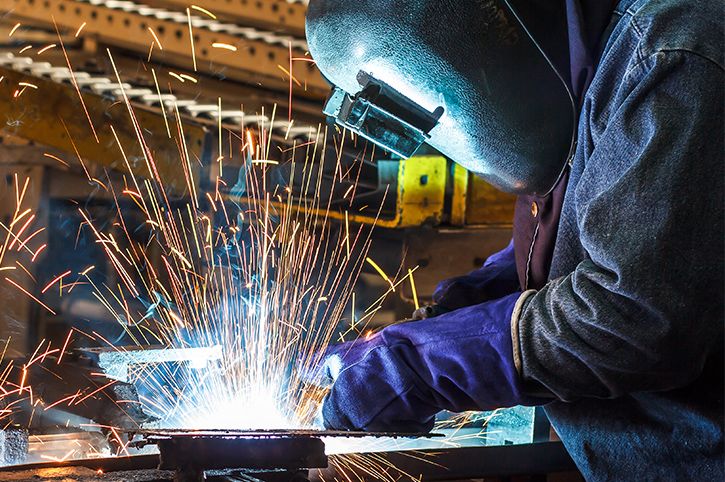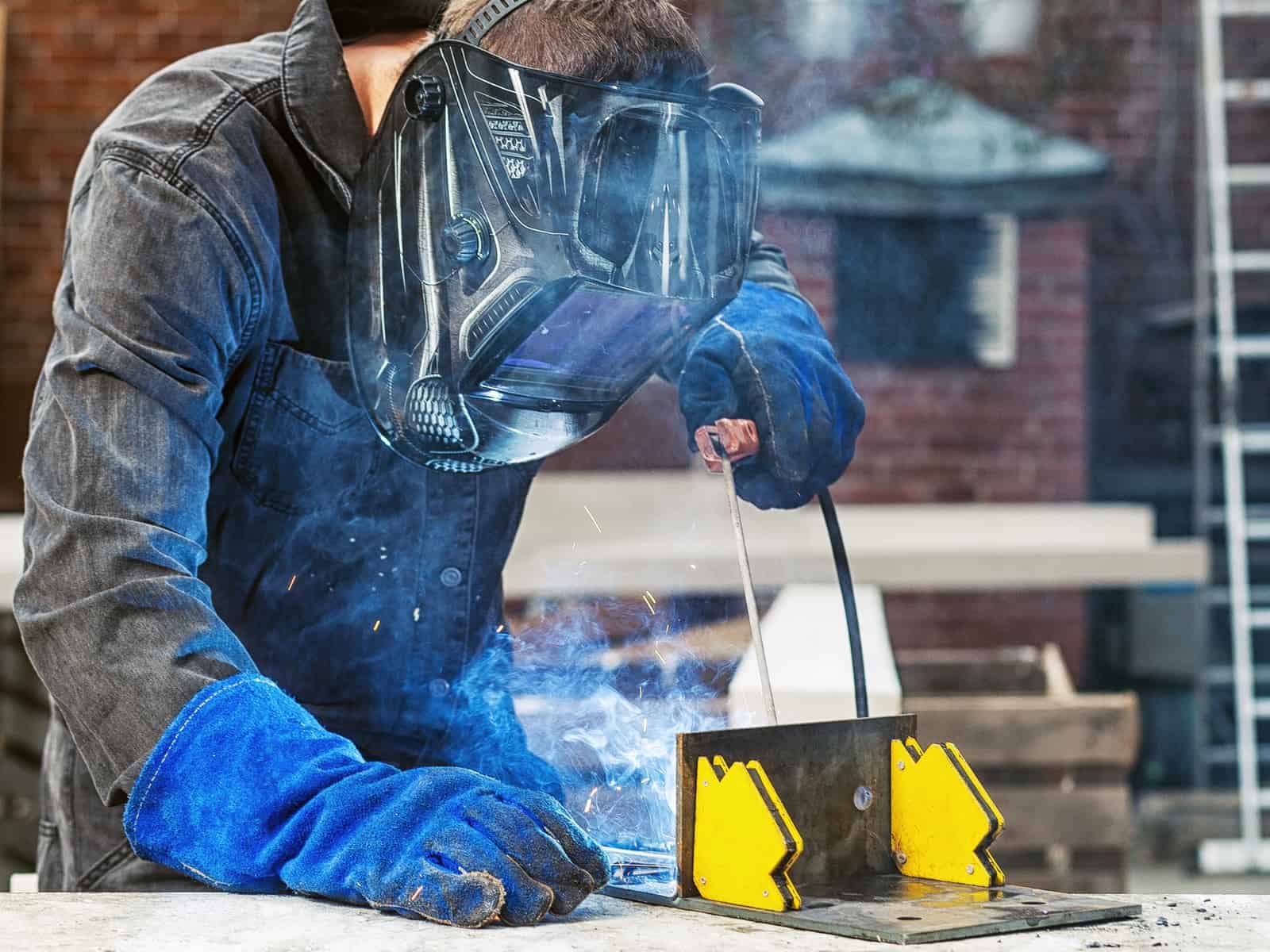Everything about Welding: Key Insights Into Techniques and Best Practices for Success
Welding incorporates a range of methods, each suited for particular materials and applications. Comprehending these approaches, such as GMAW, SMAW, and TIG, is necessary for attaining excellent results. The right devices and safety and security methods can not be ignored. As preparation and repairing play critical duties in the welding process, understanding these aspects can considerably boost the high quality of the final item. What are the crucial factors that assure an effective weld?
Understanding Various Welding Techniques
Welding techniques include a range of techniques, each suited to particular applications and materials. Amongst one of the most usual methods are Gas Metal Arc Welding (GMAW), Secured Steel Arc Welding (SMAW), and Tungsten Inert Gas Welding (TIG) GMAW, likewise referred to as MIG welding, is popular for its speed and convenience, making it optimal for slim products. SMAW, or stick welding, is favored for its simplicity and efficiency in exterior environments, particularly with thicker steels. TIG welding provides precision and control, making it appropriate for intricate work and non-ferrous steels (Belgrade Fabrication). Each strategy has its special advantages and factors to consider, allowing welders to select the finest method based upon the task's needs, material kind, and preferred outcomes. Understanding these methods is necessary for successful welding
Crucial Welding Devices and Tools
While different welding methods call for certain skills, the ideal equipment and tools are just as vital for attaining top quality results. Necessary welding equipment consists of welding devices, which vary depending upon the method-- such as MIG, TIG, or stick welding. Safety gear, including helmets, aprons, and gloves, guarantees safety and convenience throughout the procedure. On top of that, clamps and components assist secure products in location, making sure accuracy in welds. Consumables like welding rods, wire, and securing gas are likewise critical components that influence the top quality of the weld. Devices such as grinders and cutters help with surface area preparation and post-weld ending up, adding to a specialist outcome. Purchasing high-quality tools ultimately improves the effectiveness and effectiveness of welding jobs.
Safety And Security Practices in Welding
Proper safety practices are vital in the welding market to protect employees from prospective dangers. Welders have to wear suitable individual protective tools (PPE), consisting of safety helmets with correct shading, handwear covers, and flame-resistant garments. Appropriate air flow is vital to lower direct exposure to hazardous fumes and gases generated during the welding procedure. Additionally, workers need to be learnt the correct handling of welding equipment to protect against crashes. Fire safety and security steps, such as keeping flammable products away from the welding location and having fire extinguishers conveniently offered, are necessary. Regular inspections of equipment and offices can assist recognize potential threats prior to they bring about mishaps. By adhering to these security methods, welders can develop a safer working atmosphere and lessen risks connected with their profession.
Preparing Materials for Welding
Preparing products for welding is a vital step that greatly influences the top quality and stability of the final product (Belgrade Welding). Correct prep work involves cleaning the surfaces to remove impurities such as corrosion, oil, and dust, which can jeopardize the weld. Strategies such as grinding, sanding, or utilizing solvents are commonly utilized to accomplish a clean surface. In addition, making certain that the materials fit with each other comfortably is necessary; gaps can cause weak welds. It's additionally crucial to consider the placement and positioning of the elements, as this will certainly influence the convenience of welding and the last result. Lastly, selecting the appropriate filler material and ensuring compatibility read this post here with the base steels is crucial for attaining strong, long lasting welds
Tips for Achieving High-Quality Welds
Attaining high-quality welds requires interest to detail and adherence to best methods throughout the welding process. Correct joint preparation is vital, guaranteeing surfaces are clean and free from impurities. Choosing the ideal filler material and welding technique based upon the base metals is essential for optimal bonding. Keeping consistent traveling rate and angle while welding can stop flaws and promote uniformity. Additionally, controlling warmth input is important; extreme heat can bring about bending and compromised joints. If required, consistently inspecting the welds during the procedure enables for instant adjustments. Using suitable post-weld therapies, such as cleaning and stress relief, can improve the toughness and stability of the weld, ultimately making sure a successful end result.
Repairing Typical Welding Issues
Welding usually provides difficulties that can impact the top quality and stability of the end product. Usual issues such as porosity, inconsistent weld beads, and getting too hot can occur, each needing specific fixing strategies. Understanding these troubles is essential for welders to improve their skills and achieve suitable results.
Porosity Issues Discussed
Although porosity can typically be neglected, it continues to be a vital problem in welding that can endanger the integrity of a completed item. Porosity refers to the existence of little gas pockets within the weld grain, which can lead and damage the joint to early failing. This issue commonly develops from pollutants, wetness, or inappropriate protecting gas insurance coverage throughout the welding procedure. To mitigate porosity, welders ought to verify that the base materials are dry and clean, use suitable protecting gases, and preserve constant welding criteria. Consistently checking the equipment and atmosphere can likewise assist identify potential concerns prior to they materialize in the weld. Addressing porosity properly is essential for achieving strong, long lasting welds that fulfill high quality standards.

Inconsistent Weld Beans
Inconsistent weld beads can considerably impact the high quality and toughness of a completed product. Different aspects contribute to this problem, including improper traveling speed, wrong amperage settings, and irregular electrode angles. When the welder moves also swiftly, a grain might appear slim and do not have penetration, while relocating also gradually can trigger excessive buildup. Additionally, utilizing the wrong amperage can lead to either undercutting or too much spatter, both of which concession weld integrity. The welder's technique, such as irregular lantern movement, can likewise lead to irregular grain look. To reduce these issues, welders should focus on maintaining constant, controlled activities and ensuring appropriate equipment settings to accomplish uniformity in their welds. Uniformity is crucial to attaining trustworthy and solid welds.
Overheating and Warping Issues
Excessive heat throughout the welding procedure can lead to considerable getting too hot and deforming concerns, impacting the architectural honesty of the workpiece. These problems usually manifest as distortion, which can jeopardize placement and fit-up, making further setting up challenging. Aspects contributing to overheating consist of the selection of welding parameters, such as voltage and travel speed, along with the kind of material being bonded. To reduce these problems, welders must keep regular traveling rate and proper warmth input while keeping track read review of the workpiece temperature. Additionally, preheating or post-weld heat treatment can help ease stresses brought on by rapid cooling - Belgrade Fabrication. Normal evaluation and adherence to best techniques are important in avoiding overheating and ensuring the long life and dependability of welded structures
Regularly Asked Inquiries
What Are the Job Opportunities in the Welding Sector?
The welding market provides diverse job chances, including positions as welders, assessors, designers, and teachers. Professionals can operate in production, building, aerospace, and vehicle markets, benefiting from solid demand and affordable salaries in different roles.
Exactly How Can I Improve My Welding Rate Without Sacrificing Top Quality?
To improve welding rate without sacrificing top quality, one ought to exercise efficient techniques, maintain devices, maximize settings, and improve hand-eye coordination. Routine training and looking for feedback can likewise greatly add to achieving quicker, top quality welds.
What Certifications Are Readily Available for Welders?
Many qualifications exist for welders, including those from the American Welding Culture (AWS), the National Facility for Construction Education and Study (NCCER), and various Visit Website industry-specific companies. These credentials improve employability and show ability proficiency.
How Does Welding Impact the Residences of Metals?
Welding affects the residential properties of steels by altering their microstructure, which can result in modifications in ductility, toughness, and solidity. Heat input and cooling rates during the process considerably impact these product features.
Can I Bonded Dissimilar Metals With Each Other?

Comments on “Top 5 weld defects solved by Belgrade Welding experts”